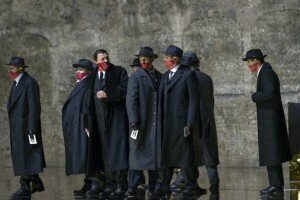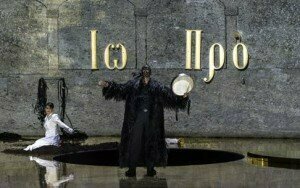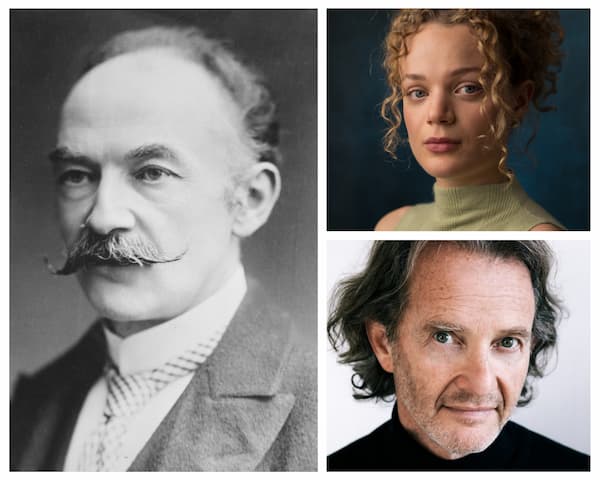
Salome 2018: Matthäus Schmidlechner (First Jew), Jörg Schneider (Fourth Jew / Slave), John Daszak (Herodes), Patrick Vogel (Third Jew), Mathias Frey (Second Jew), David Steffens (Fifth Jew), Ensemble
© Salzburger Festspiele / Ruth Walz
This Lithuanian soprano, who debuted in Salzburg a year earlier as Marie in Wozzeck (see here), completely stole the show. Grigorian’s portrayal of the young princess moving from innocent young girl to petulant teenager and ultimately to sexualized and horrifically destructive young woman was terrifying in its impact. She demonstrated the supremely rare combination of effortless vocal strength and lyrical beauty. Her unforced and flexible soprano was well suited for the physically demanding direction that saw her sing while splashing around on her knees in a pool of milk, caressing a headless corpse and ultimately delivering her final scene from a water-filled ditch.

Salome 2018: Asmik Grigorian (Salome)
© Salzburger Festspiele / Ruth Walz
Franz Welser-Möst led the Vienna Philharmonic with fluidity and verve, drawing depth and beauty from one of the finest orchestras in the world. No delicate phrasing went unnoticed, no detail went uncherished as Strauss’ rich score took flight.
Romeo Castellucci, multi-hatting as director, scenographer, costume and lighting designer, was the other main attraction of the evening. The controversial Italian challenged the audience with stark and disturbing imagery and provocative themes that demanded reflection.

Salome 2018: Anna Maria Chiuri (Herodias)
© Salzburger Festspiele / Ruth Walz
Castellucci also completely does away with the dance of the seven veils, played with stunning romanticism by the orchestra, leaving a barely dressed and motionless Salome alone on a plinth in a yoga-like child’s pose, as a stone cube slowly descends on her, as if crushing the young girl and ultimately swallowing her.

Salome 2018: Asmik Grigorian (Salome), Gábor Bretz (Jochanaan)
© Salzburger Festspiele / Ruth Walz
Performance attended: 9 August 2018

